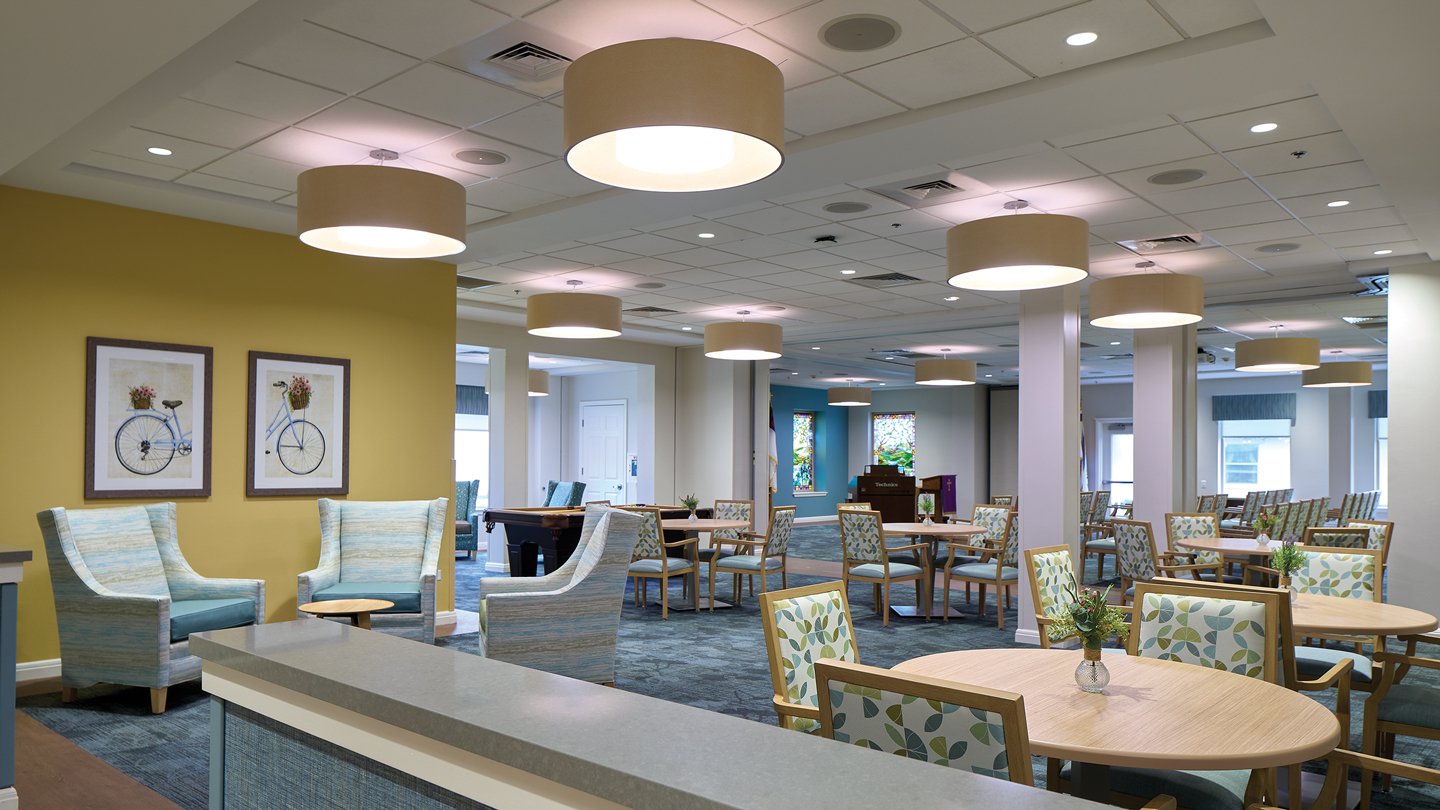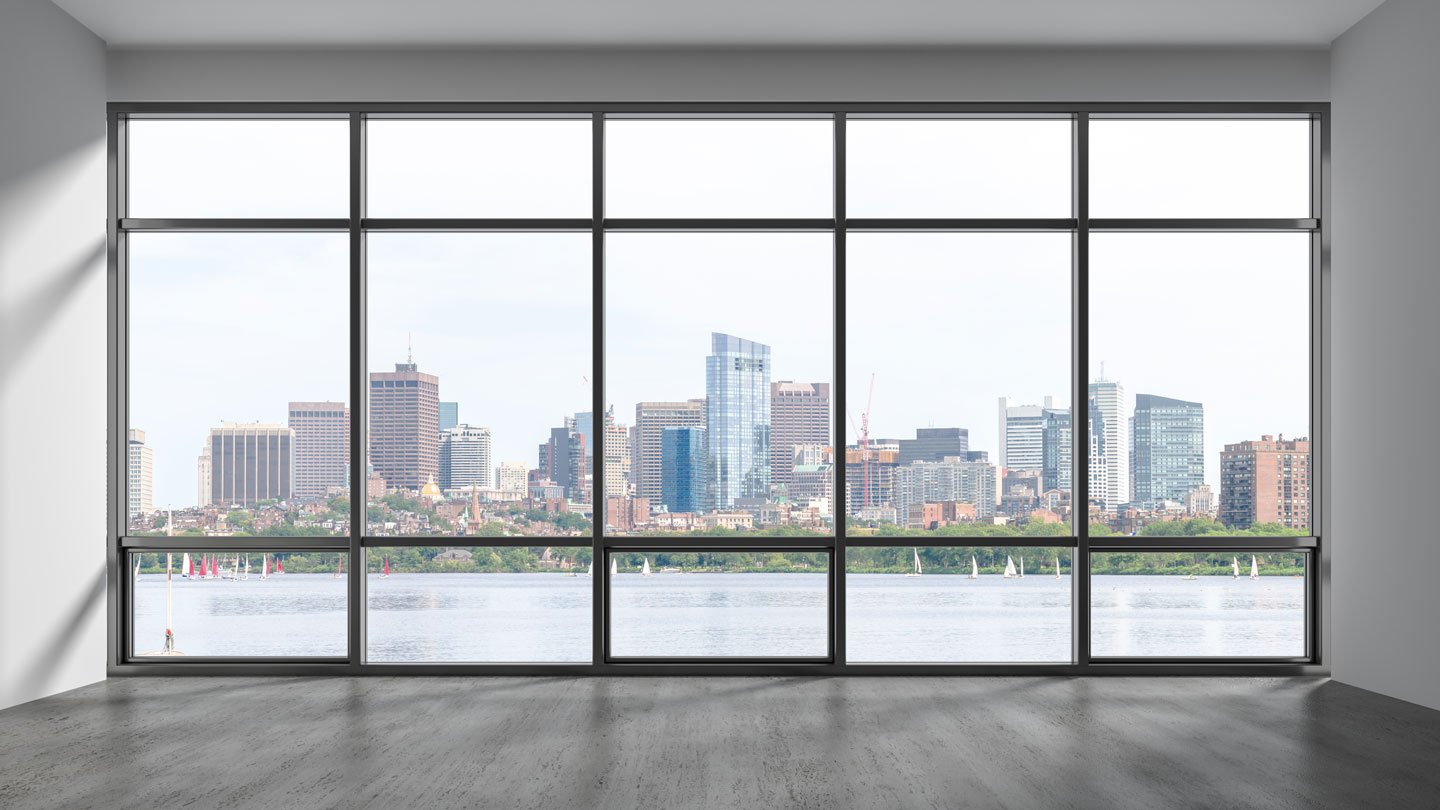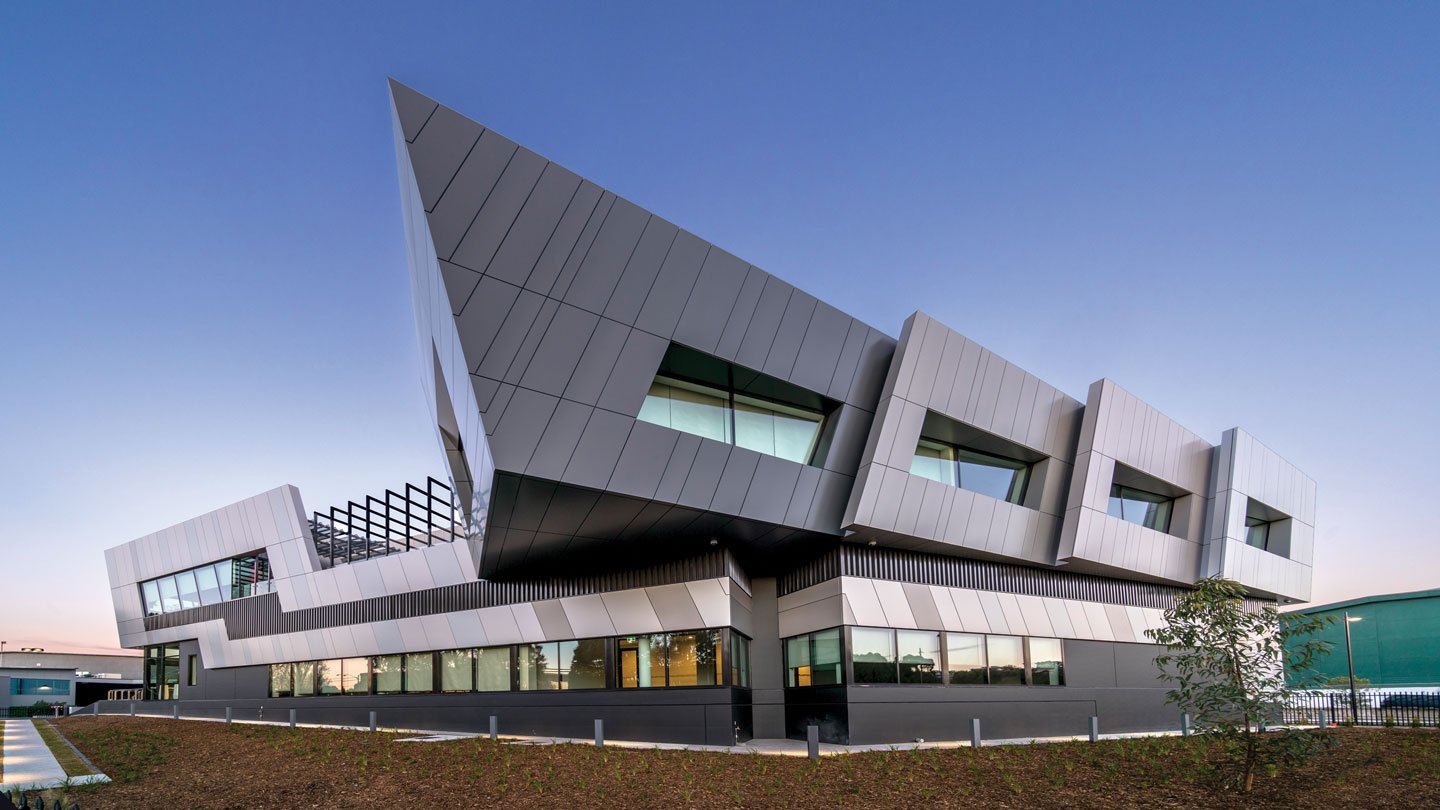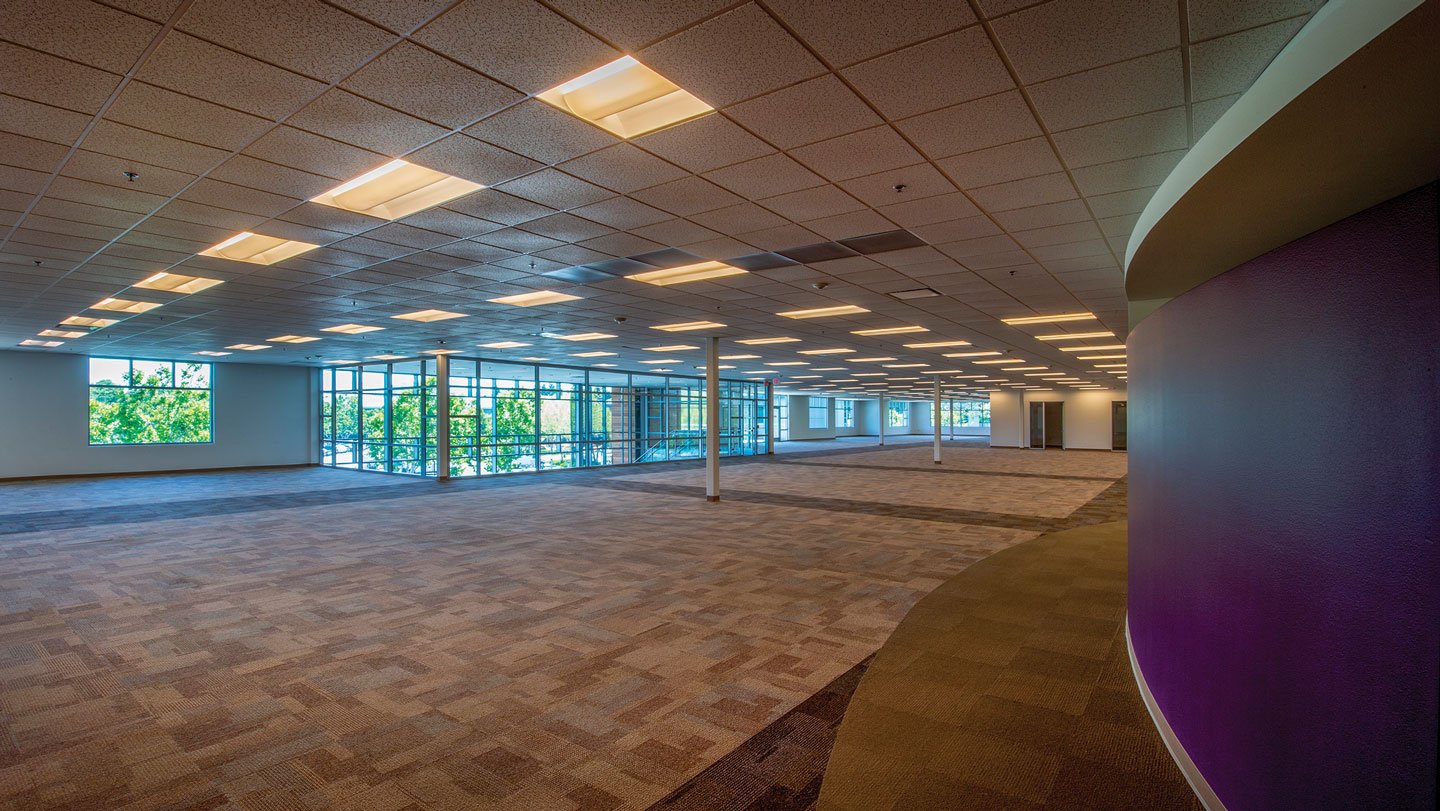
Brighter Days and Darker Nights: Lighting That Appeals to Circadian Rhythms
Wellness advocates believe integrating biological lighting solutions in buildings would boost both productivity and health.
Las Vegas casinos, with their constant brightness and windowless rooms, have long understood that human bodies respond keenly to light. More property owners are starting to pay attention to that relationship too.
Circadian rhythms (derived from the Latin, with circa meaning “around” and diem meaning “day”) refer to the human body’s cyclical response to transitions between day and night. This rhythm repeats roughly every 24 hours.
Wellness advocates are embracing new science about how the human eye and brain react to light. Although requiring initial design effort, lighting that addresses brightness, color and wavelength spectrum appeals to human internal clocks and may create more productive and healthier environments.
What Is Circadian Lighting?
More specifically, “Circadian lighting is defined as lighting that influences a nonvisual, physiological response within the human body,” according to Keith Graeber, director of engineering at the California Lighting Technology Center (CLTC) at the University of California, Davis. Circadian lighting is synonymous with changes in light over the course of a day.
Modern lifestyles, in which people have easy access to constant light and increasingly engage with phone, computer and TV screens at all hours of the day (and night), disrupt circadian rhythms. At the 2023 CLTC conference, experts James Benya and Deborah Burnett cited studies showing that this disconnect from natural rhythms disrupts “metabolic function, immune response, cognitive performance — even genetic expression.” Robert Soler, vice president of biological research and technology at BIOS, a biological lighting solutions company, said that society sees “consequences of circadian disruption as we age — not just that you go to bed a little later than you might like … We are doing ourselves no favors with the lighting environment we are providing.”
Brightness, Color and Spectrum
To improve a lighting environment, experts focus on the most significant attributes: brightness, color quality and a wavelength spectrum that contains both visual and nonvisual cues.
Brightness — measured in lux — corresponds to the sun’s light patterns and is perceived by the human eye. The human body undergoes physiological changes in concert. For instance, at approximately 6:45 a.m., humans experience the sharpest rise in blood pressure, followed by the cessation of melatonin (the hormone that makes humans sleepy). A period of high alertness occurs around 10 a.m. Nature’s grand biological clock undergoes a reverse process at night –– until humans confuse the transition with electronic screens.
Quality of light color matters too. At the Well Living Lab, which studies indoor environments, researchers found that color tuning to bluer, cooler tones improved task switching and perceived productivity. Conversely, the warmer tones of sunrise and sunset provided contrast and cued transition to calmer, sleepier states.
Simple color tuning, however, is not enough. In the 2000s, researchers discovered a photoreceptor in the human eye tied to perceiving time of day rather than images. This nonvisible cue — measured as Melanopic Equivalent Daylight Illuminance (M-EDI) — occurs higher on the light spectrum than what typical LED and fluorescent lighting offer. In general terms, M-EDI represents the artificial equivalent of daylight.
As a result, industry standards such as the WELL Building certification now measure M-EDI. The daytime goal is 250 M-EDI, with lighting measured vertically at the eye, in the primary viewing direction. This key metric explains how much light sources affect human nonvisual systems.
Spectrally optimized LED lights do what typical LED lights stop short of — alerting the melanopsin that produces wakefulness. “You can have a hot new office that looks trendy and it looks healthy because it has a living wall, but if you have a standard LED spectrum, you’re kind of missing the whole point of what drives true health,” Soler said. Companies such as BIOS produce spectrally optimized LED boards that can replace standard LED boards inside light fixtures. Additionally, BIOS has developed a 20-inch-tall smart table lamp that can deliver specifically optimized light to individuals.
Freedom House, a 72-bed memory care center in San Antonio, undertook a large lighting renovation to capitalize on circadian rhythms. Rooms now contain layered lighting in the form of ceiling lights, sconces and lower-level strips of light. Resident rooms are outfitted with amber LEDs to provide a nighttime guide to bathrooms without interfering with sleep cycles. According to BIOS, residents in these renovated spaces are seeing fewer falls and behavior issues and are experiencing better sleep.
Wellness
“Sleep,” as Shakespeare wrote, “knits up the raveled sleeve of care.” Because light significantly affects human physiology by influencing sleep, well-funded hospitals and health facilities have proved to be early adopters of circadian lighting systems.
At Kaiser Permanente Medical Center in San Diego, an all-LED, indirect lighting system displays cool blue light during the day to stimulate wakefulness and transitions to warmer colors in the evening for better rest. Patients and caretakers have individual control of the lighting. For instance, touchscreens outside patient rooms allow medical staff to control lighting without disrupting occupants. Lighting designers have a sense of whimsy too — in the labor and delivery unit, pink and blue lights announce births.
Although important, sleep does not tell the whole story on wellness. As Soler cautioned, “If we rely on sleep as a whole to be the reason for why people are more productive, that gets really confusing. … What you get in the daytime affects your sleep at night.” The nonvisual cues benefit both daytime performance and nighttime serenity in addition to alertness, visual adaption (glare), sensory processing and mood.
Cost and Codes
Adapting existing buildings to accommodate circadian lighting may require retrofitting with LED boards or entirely new fixtures, plus the cost of labor. Soler estimates that spectral lighting boards cost approximately 20% to 40% more than traditional LED boards. The upcharge relates to the LED board components only and represents a small portion of the entire light fixture.
Lighting codes, such as California’s Title 24, can also cause difficulty reconciling the bright light humans need for productivity with the goal of conserving energy. Because illumination is generally underdelivered during the day (and overdelivered during the night), increasing light can threaten code compliance.
While circadian lighting systems cost more than more traditional LED systems, they improve the balance sheet in other areas. Early adopter hospitals chose to renovate lighting to reduce patient stay times, with quantifiable results. Lighting developer Kumux reports reduced hospital stays in the 15% to 30% range due to human-centric lighting.
In the quest for brighter days to boost productivity and darker nights to encourage health, lighting works best when sensitive to the human body.
Alice Devine is the author of "Suite Deal: The Smart Landlord’s Guide to Leasing Real Estate" and a lecturer at the University of California, Berkeley’s Haas School of Business.
RELATED ARTICLES YOU MAY LIKE

Governments Turning to Adaptive Reuse Legislation for Additional Housing
Tax breaks, streamlined approvals and grants are some of the supply-side incentives.
Read More
Data Center Real Estate: Challenges and Opportunities in the Digital Age
Data center inventory growth has accelerated across North American markets.
Read More
Ripe for Conversion
Will a radical change in the purpose of underutilized office buildings transform the market?
Read More



